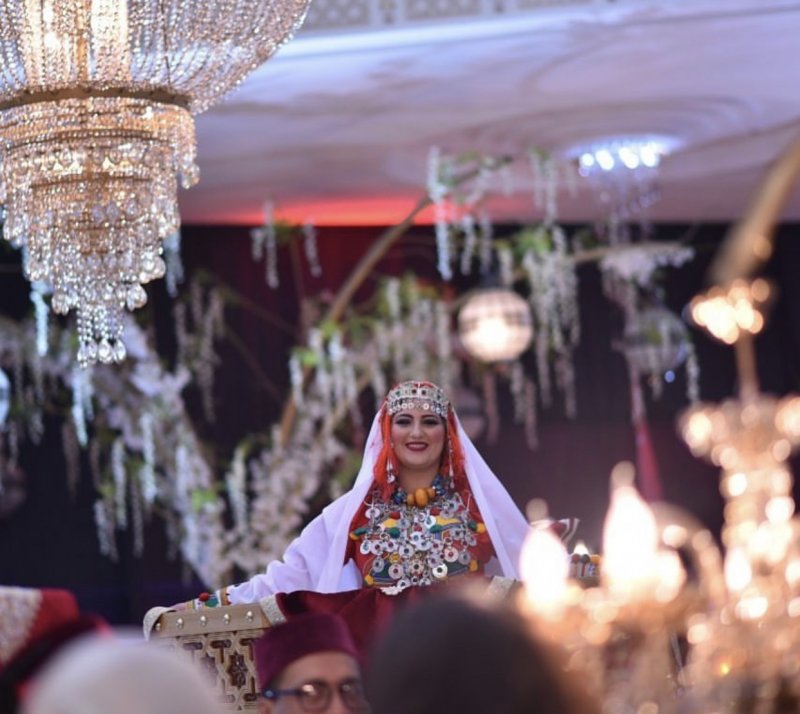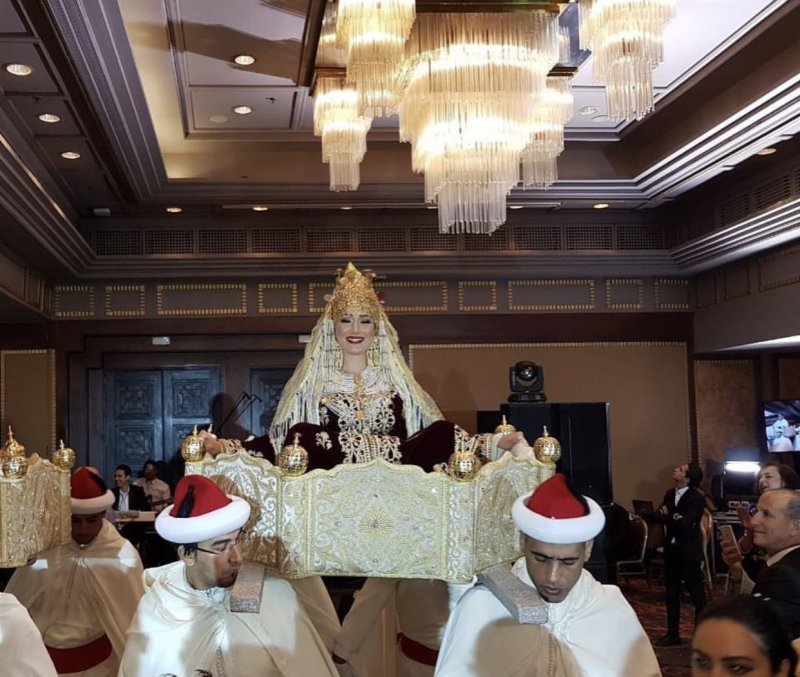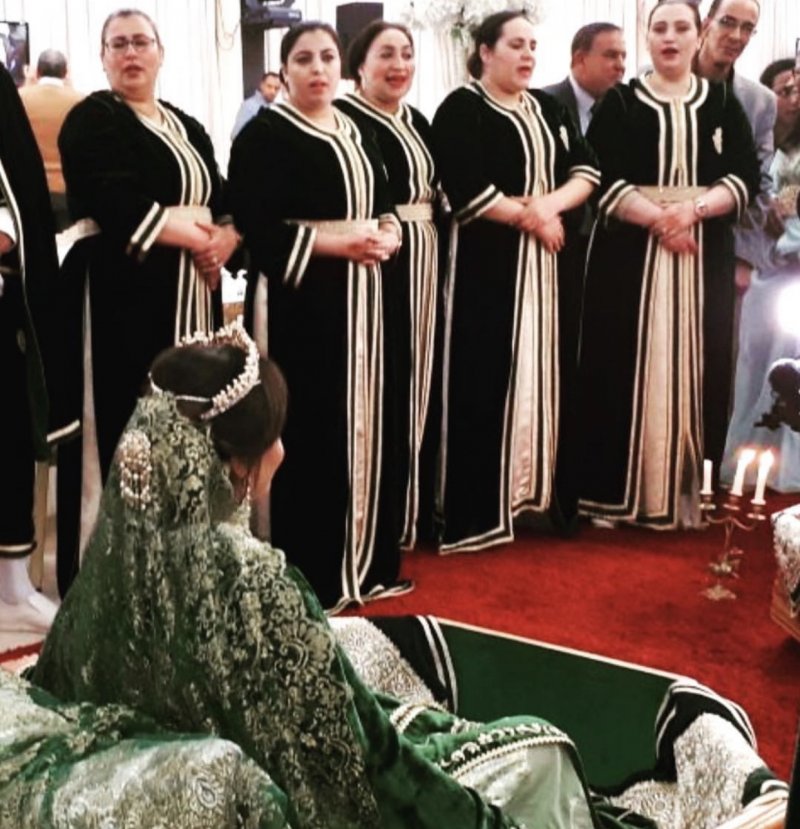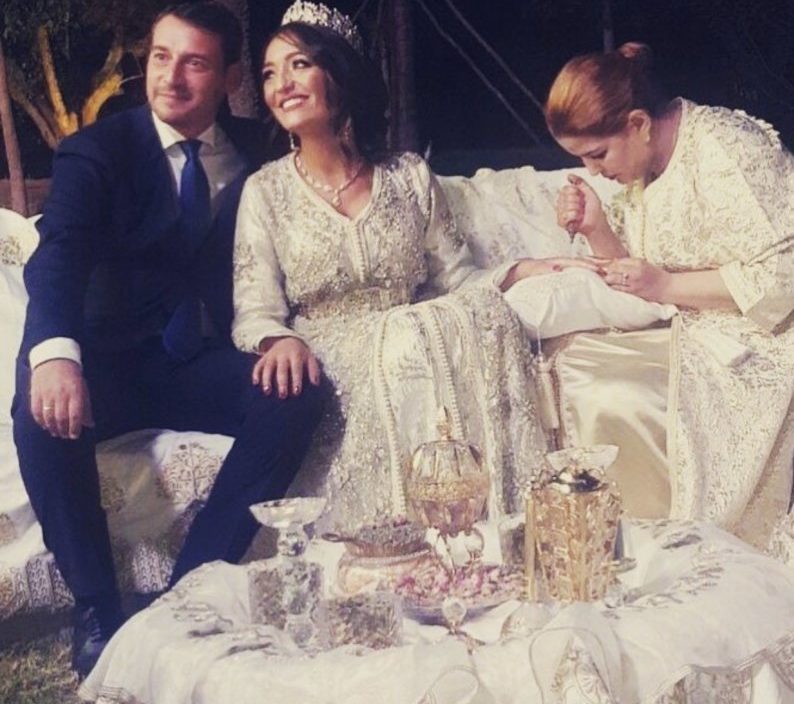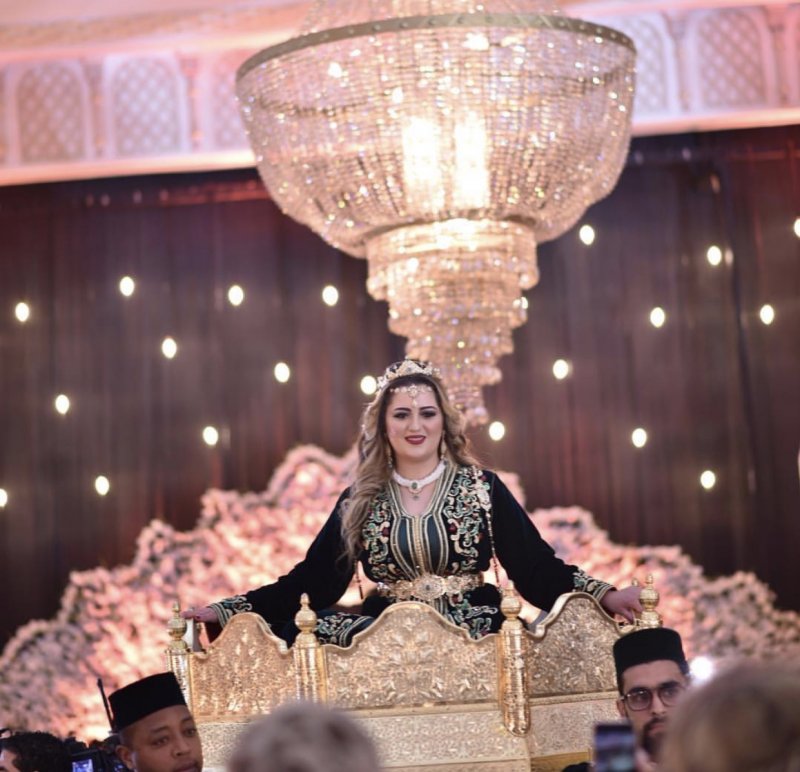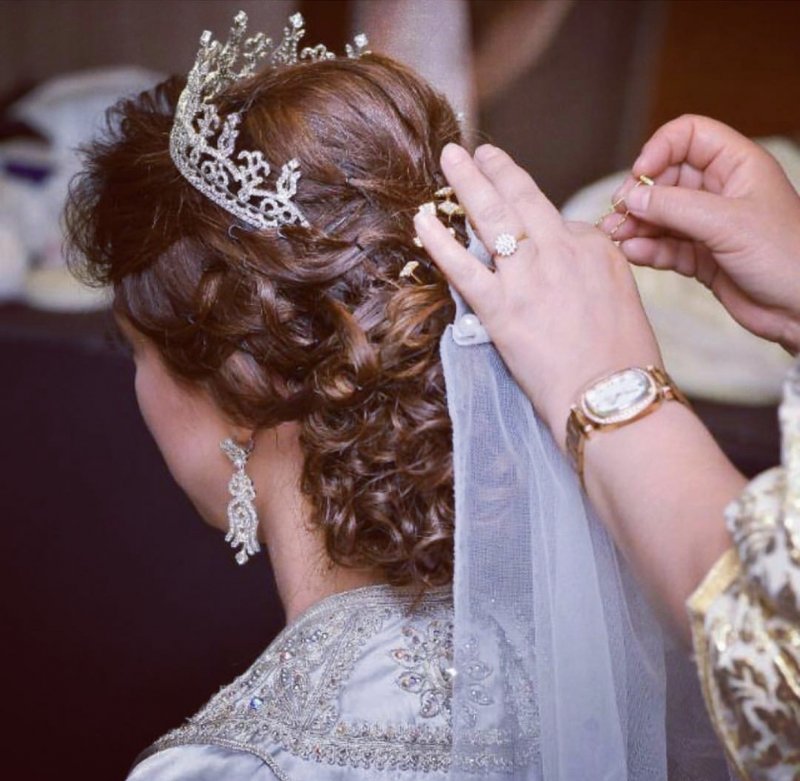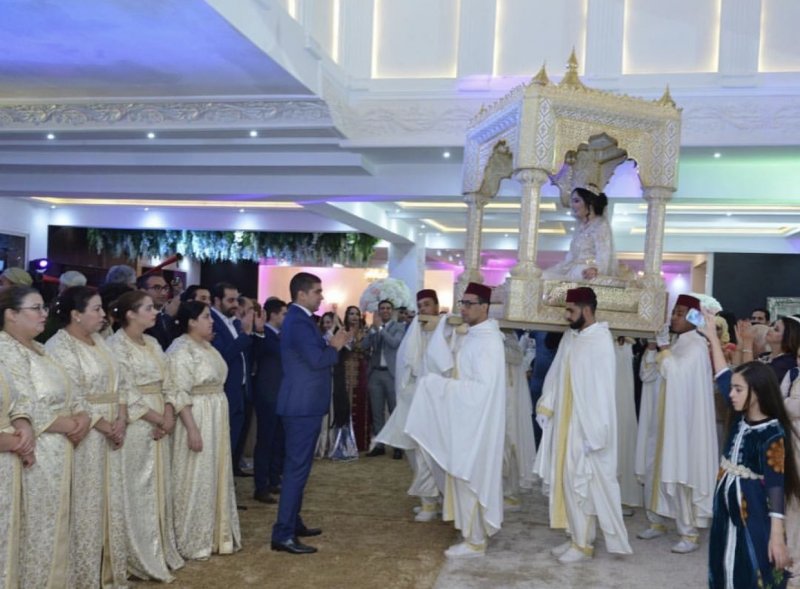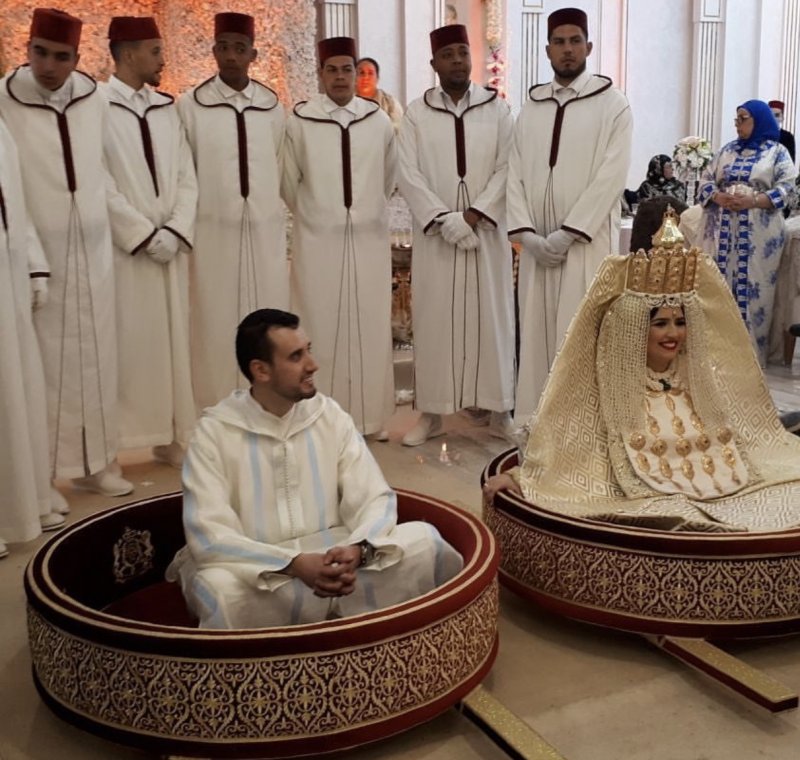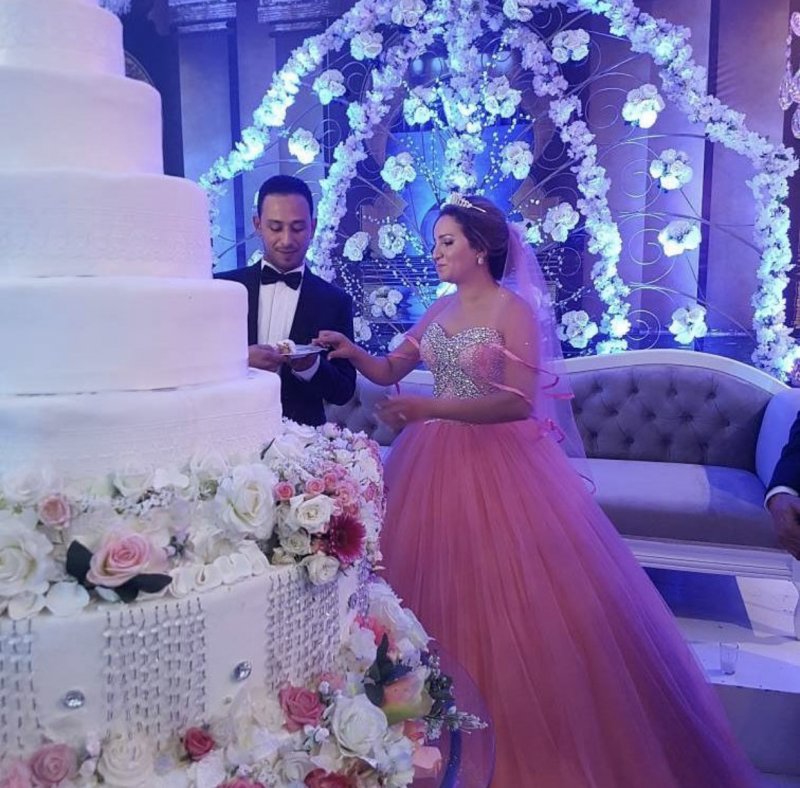Morocco has a rich and diverse culture, with influences from Berber, Arab, and Mediterranean peoples. Important customs and rituals surround all major life events, including births, deaths, coming of age, and marriage
Morrocan wedding traditions vary around Morocco, but one thing is certain: it will mean a multiple day celebration with ornate dresses and jewelry, feasting, and lots of dancing and music!
Moroccan Wedding preparations may start months beforehand, as soon as a couple becomes engaged. Traditionally, the man and his family visit the woman’s house.
She and her family will serve tea, and the man’s parents will propose marriage for their children. Sometimes the visit is a surprise, but often it is planned ahead of time and the couple has discussed it.
These days, most couples get engaged on their own, but it is still important to have a small party with the families to present the engagement ring and make the engagement official. The groom-to-be will usually give presents to his fiancée, too.
Then, plans for the wedding party can begin!
Reservations are made far in advance for the key parts of the party – a venue, a caterer, musicians, decorators, makeup artists and hair stylists.
The moroccan wedding may take place in a home, a hotel ballroom, or a riad, and the family will often visit a few locations before selecting one.
They will also attend a tasting with caterers, decide on decoration, and hire a musical group specializing in wedding music.
They will also hire a negaffa, a woman who assists the bride throughout the day.
The negaffa will help the bride with her hair, makeup, clothing, and accessories, often providing some of the outfits and jewelry, and will accompany the bride for every moment of the party.
During the party, the bride will wear 2-4 different outfits, and the groom will wear 1 or 2. These must be rented or purchased and tailored if need be.
In Morocco, the legal aspect of the marriage – signing a certificate with a religious judge – is separate from the party and only parents attend.
Some couples decide to sign the marriage certificate several weeks or months before the wedding party, while others wait until just a day or two before.
Either way, this will happen before the party can take place. Once the paperwork is signed, the couple is considered legally and religiously married, but the marriage is not viewed as final until after the party
The Wedding Days in Morocco
In the past, a traditional moroccan wedding lasted seven days and involved multiple parties and events. These days, they rarely last the full week but usually include at least three days of events.
Two of the most important events for the woman are hammam day and the henna party.
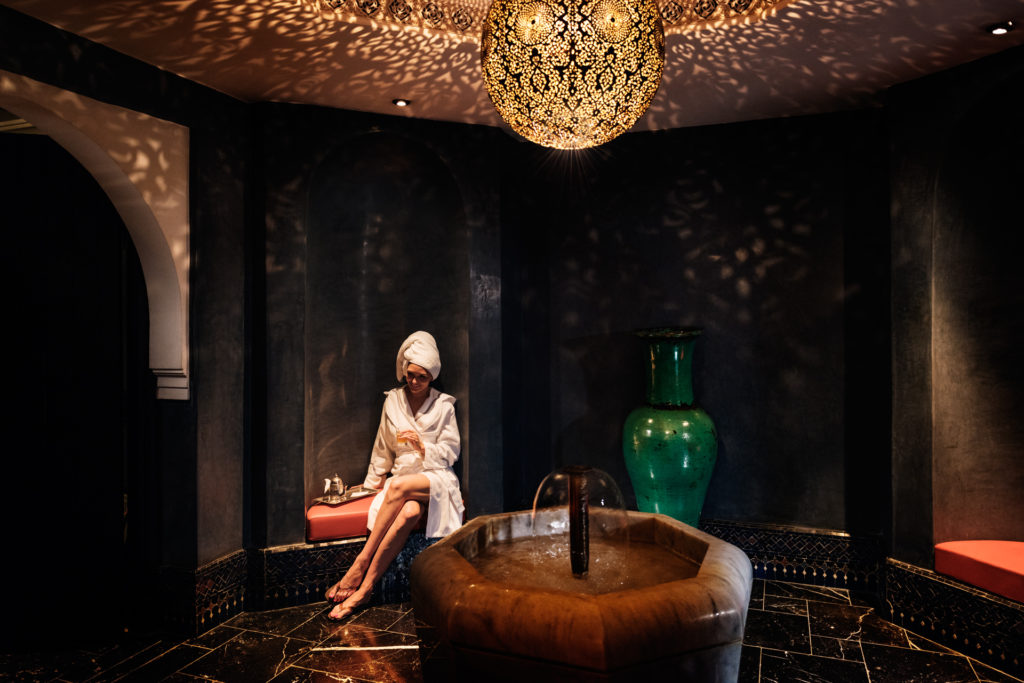
Two days before the wedding, the bride will visit the bath house with her female relatives and close friends.
After relaxing in the steam room, the hammam attendant will scrub and massage her skin and wash it with a special perfumed soap, leaving the bride feeling fresh and ready for the wedding. The next day is the henna party.
Again, the bride gathers with her close female friends and relatives and has her hands and feet decorated with beautiful henna tattoos to wish her good luck in her marriage.
The intricate designs may take a few hours to be applied and to dry, and the guests will entertain the bride with music, dancing, tea, and cookies.
Once the bride has her designs completed, everyone else gets henna too! The groom may have a party with his friends on this day as well, which might include reading the Quran and having a meal.
Finally, it is time for the party itself!
In vast majority of cases, the moroccan wedding is mixed, with men and women seated together in the same space. This is more common these days.
In some conservative settings, there may be two parties – weddings are sometimes separated into male and female parties in separate areas.
Modesty is very important in Islam and Moroccan culture, and many people prefer separated parties so they can dance and celebrate without feeling uncomfortable
Moroccan weddings begin in the evening and last late into the night. The groom and his family, and some of the bride’s family, will be present as guests arrive to welcome them with a glass of milk and a date, symbolic of hospitality.
The bride does not arrive until an hour or two into the evening – her grand entrance is a very important part of the party. She will have spent the afternoon getting ready – hair, make up, and a beautiful dress and jewelry.
She will often be carried in on an amaria, a beautifully decorated roofed platform carried by hired attendants. The bride and groom will sit for a while on a decorated couch and guests will greet and take pictures with them.
Early on in the evening, the feasting begins with tea and cookies. Guests are usually given a small bag to take some cookies home with them as a party favor.
The bride will usually change her outfit before the dinner is served; then the bride and groom sit together with their families for the meal of the best of Moroccan cuisine .
A light course such as a rice dish or bastilla, a savory pastry filled with chicken or seafood, is served first.
This is followed by the main course, often lamb, beef, or chicken. A refreshing course of fruit often follows.
The courses are usually spaced out such that the bride and groom and the guests have time to walk around, dance, and visit with others in between. By the time the main course is served, it might be 2 or 3 in the morning!
At some point after dinner comes a highlight of the evening. The bride will change into another outfit – in some regions, it will be a labassa fassia – a heavily decorated dress only worn on this occasion.
The groom will also change from his suit to a traditional jabador, a Moroccan tunic and pants. Then, the couple are lifted up and carried around the room on platforms called midas.
The couple changes again for the final moments of the evening – cutting the wedding cake and taking formal photos. The bride will often wear a Western-style white wedding dress, and the groom changes back to a suit.
Finally, it is time to send the new couple on their way. The couple will drive to a hotel or to their new home, followed by many cars from the wedding in a long, celebratory procession.
If you see a long line of cars honking and shouting happily, you’ll know that someone just got married!
The party usually continues even after the couple leaves, until around five in the morning. Sometimes they will even serve breakfast as the sun starts to creep into the sky after a full night of festivities.
If you ever get invited to a wedding in Morocco, make sure you say yes! It will be a wonderful experience full of music, dance, food, and fun as you celebrate a new couple beginning their life together.
